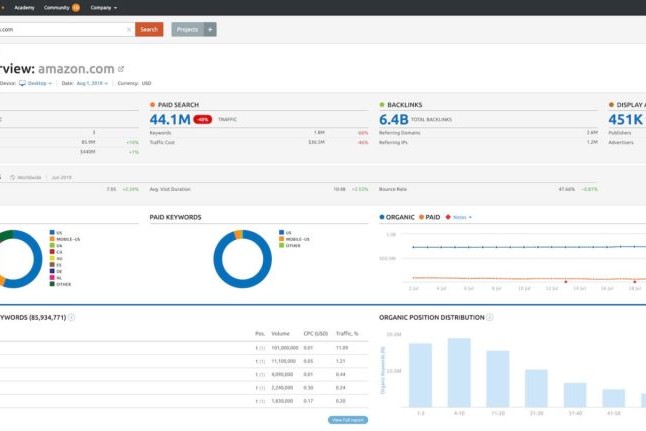AI reminds me of one of my favorite Kubrick films, Dr. Strangelove Or: How I Learned to Stop Worrying and Love the Bomb.
Whether we like it or not, modern SEO is an AI-based world that we live in, and we can either embrace this change or fail to complain about it.
Much like keyword research tools arm us with the skills and knowledge that much of the public does not possess, AI only promises to make content marketers that much more valuable to their organizations and clients.
However, using AI in content marketing depends mainly on how we apply these tools to our existing processes.
That’s why I want to provide practical examples of using AI in content marketing and tips to do so successfully.
Generative AI in Content: Basics and Limitations
Generative AI is a powerful tool that promises to augment and optimize human input and basic processes. However, like the maligned link-building practices of old, it’s easy to see how AI will be exploited to make a quick buck from unsuspecting business owners who trust your business.
Therefore, it’s essential to distinguish the differences between what AI can provide for businesses in the content field and what it can’t and shouldn’t be used for:
For example, Generative AI can be used for:
- Editing written content for better grammar.
- Assisting in drafting content based on the proper inputs and guidance.
- Outlining content based on related subtopics.
- Assisting in some basic research (with verification from actual hands-on research).
Generative AI cannot and should not be used for:
- Writing final copy to publish for clients or businesses.
- Completing 100% of your research for an assignment.
- Creating citations based on that research.
Remember, Generative AI tools like ChatGPT are not search engines; they are LLMs that try to make sense of the limited data they do have to create a response that sounds human.
And while you may think that the written content is human enough to pass a Turing test, search engines are becoming increasingly savvy at distinguishing AI-generated content.
USC provides a list of limitations worth reading before experimenting with any of these tools.
With those limitations in mind, let’s discuss nine ways my team and I have managed to leverage Generative AI to optimize our workflow, not replace it entirely.
7 Uses of Generative AI for Content
1. Topic Creation
Several SEO tools provide robust topic assistance based on keyword data and trending topics found across various search engines.
For example, using SEMrush, I can find a list of topics, headlines, and related keywords in various formats.
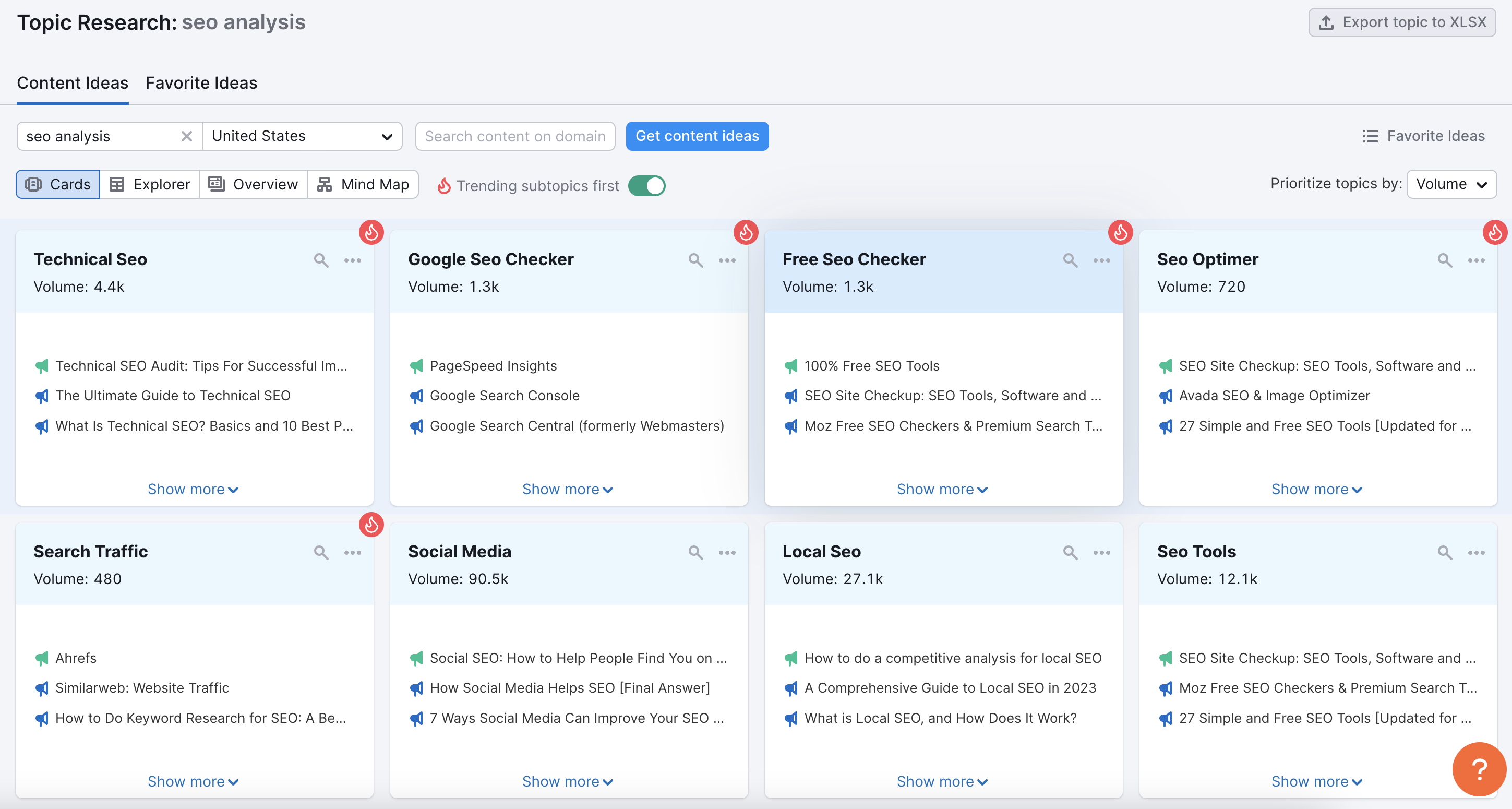
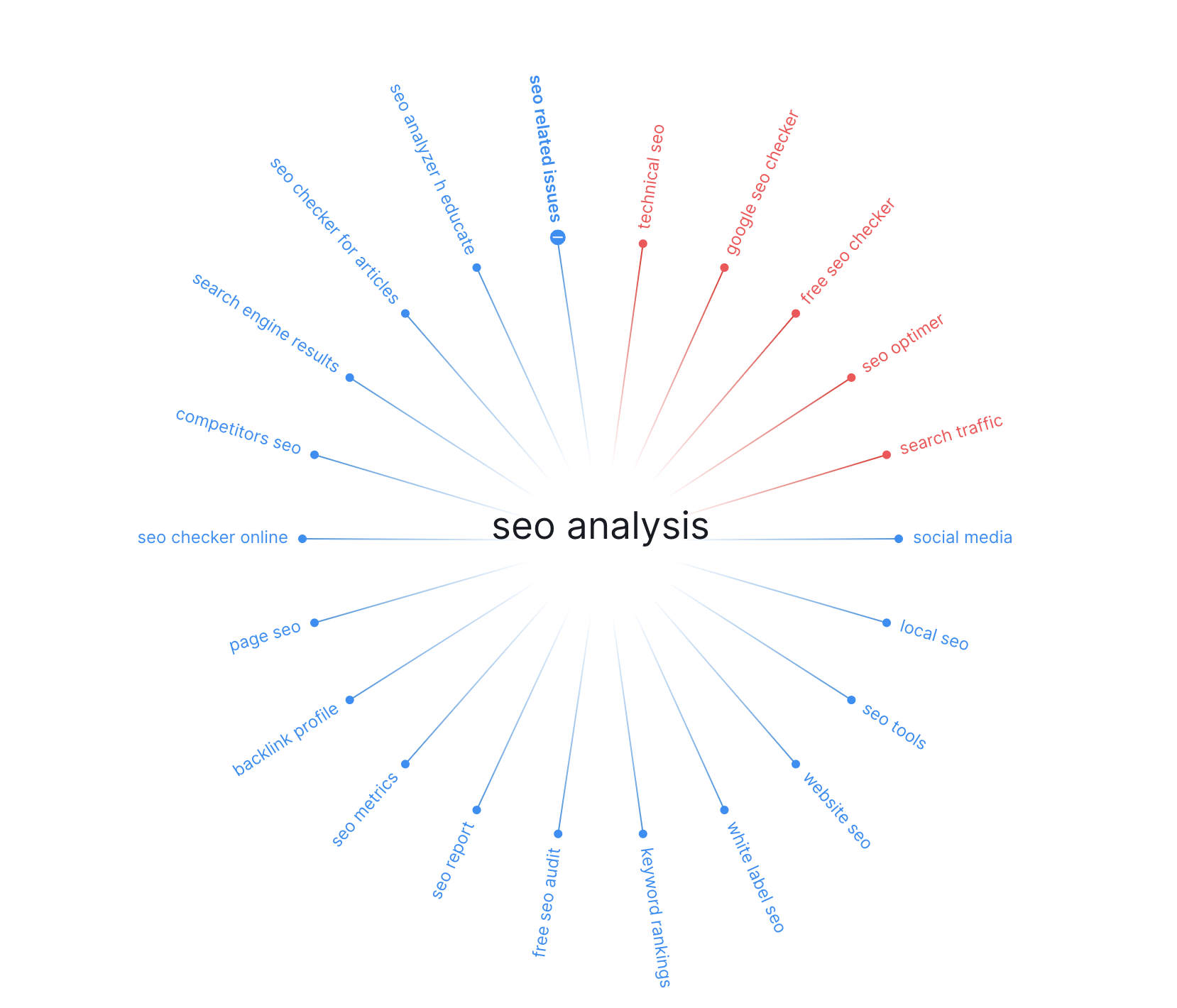 Of course, more basic tools like ChatGPT can also be used to generate a list of topics based on custom prompts you feed it.
Of course, more basic tools like ChatGPT can also be used to generate a list of topics based on custom prompts you feed it.
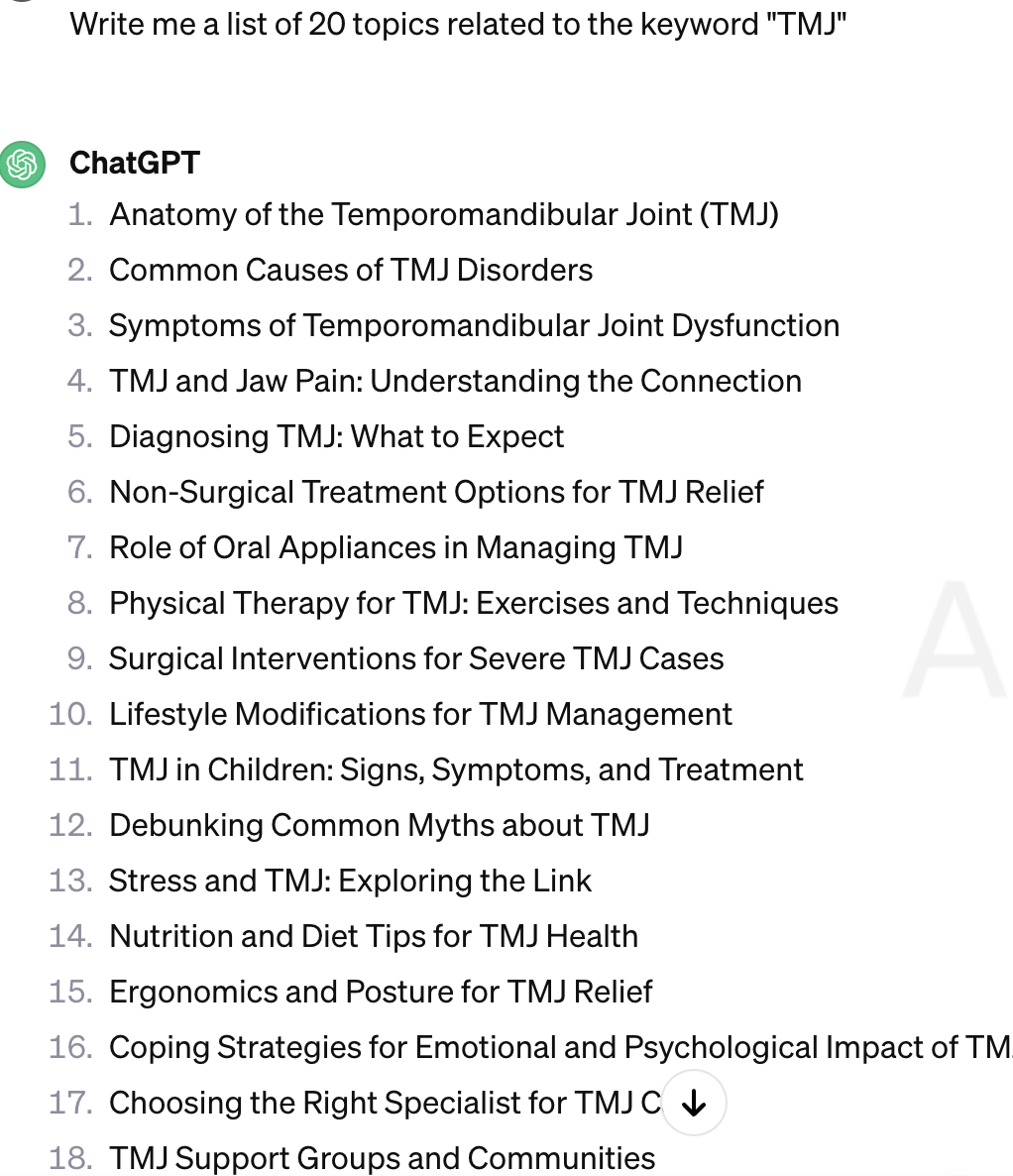
Bonus: Use tools like ChatGPT to organize keyword lists you already have and cluster them into buckets. This is powerful for creating a hub-and-spoke model with high-level topics and supporting content. Just feed your keywords into ChatGPT and ask the tool to organize them by topic.

Best Tools for Topic Generation:
- SEMrush
- Ahrefs
- SERanking
- ChatGPT
2. Outline Creation
Header tags remain an essential part of SEO, allowing marketers to implement related keywords that boost a post’s ranking potential.
Tools like SEMrush and SERanking provide many of these capabilities, which are great for organizing outlines, whether you or another writer are writing on a topic. For example, SEMrush’s SEO Content Template tool is perfect for handing off outlines to other writers, such as freelancers.
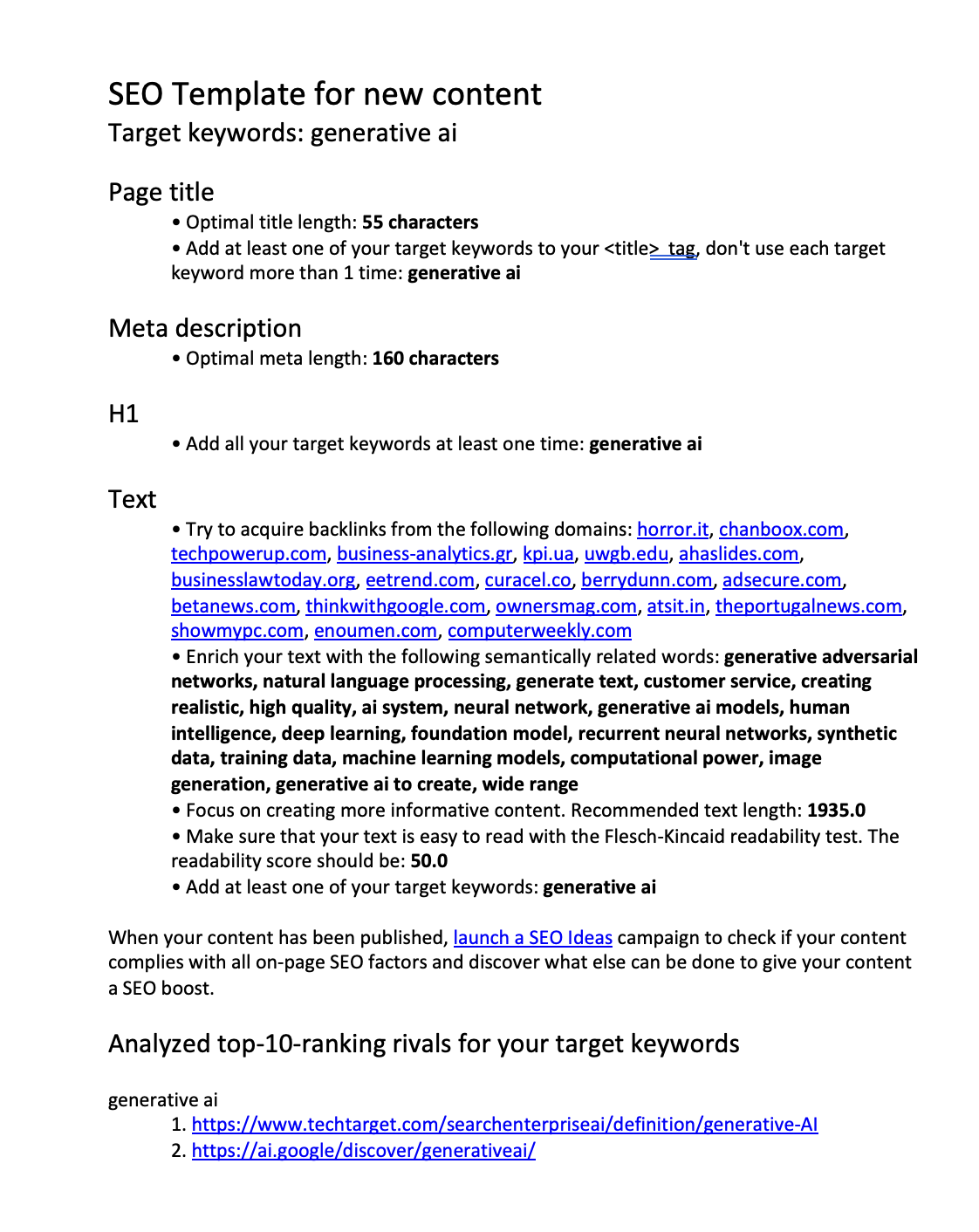 Also, using a prompt from AIPRM (a ChatGPT integration), I can generate subtopics for outlines on the fly simply by feeding one of its prompts with one of my target keywords.
Also, using a prompt from AIPRM (a ChatGPT integration), I can generate subtopics for outlines on the fly simply by feeding one of its prompts with one of my target keywords.
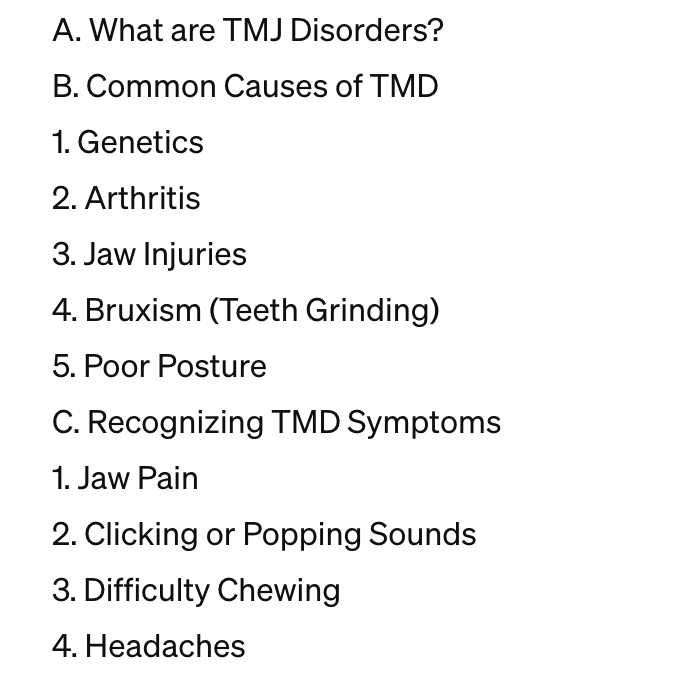
These prompts also come with a whole list of additional subtopics and FAQs with keyword opportunities for rankings.

Of course, you could train your ChatGPT prompt to create outlines like this–though it might require some trial and error.
Best Tools for Outline Creation:
- SEMrush
- Ahrefs
- SERanking
- ChatGPT
- Microsoft Excel
3. Content Optimization
SEO tools like SEMrush and SERanking are perfect for content evaluation, offering keen insights into keyword usage, readability, and originality. Each of these insights can be used to help my blogs rank higher on search engines.

In particular, SEMrush and SERanking provide amazing tools that help me simplify my sentences and eliminate weasel words that make my content more readable for audiences and search engines.
 Of course, there are a number of free and paid content analysis tools available online.
Of course, there are a number of free and paid content analysis tools available online.
Best Tools for Content Optimization
- SEMrush
- SERanking
- Grammarly
- Microsoft Word
4. Grammar and Editorial
Grammatical errors make your writing look unprofessional and can easily be cleaned up with tools like Grammarly and Hemmingway.
I personally love the Google Docs and Microsoft Word integration, which allows you to edit a document as you write.
 These tools also offer plagiarism checkers, which is great for managing freelancers. Some tools claim to distinguish between AI-written and human content, but many are unreliable.
These tools also offer plagiarism checkers, which is great for managing freelancers. Some tools claim to distinguish between AI-written and human content, but many are unreliable.
Best Tools for Grammar and Editing:
- Grammarly
- Hemmingway
- Microsoft Word
- Google Docs
5. First Draft Writing
Of course, AI can be used to create first drafts for articles, emails, and pages, though they will require a human touch. Some AI tools are much better than others, and if you want to create an email or advertisement that actually sounds like your client’s voice, it will require some training with the tools you use or just greater editorial oversight.
Best Tools for First Draft Writing:
- ChatGPT
- Jasper
- Anyword
- Copy.ai
6. Image Creation
Nothing is more depressing than writing a well-thought-out article and sticking a stock image as its featured image. That’s why I recommend that anyone without a subscription to an image service pay for an AI image-creation tool.
Tools like DALL-E and MidJourney can create stunning visuals for virtually any niche or field that looks professionally done.

Best Tools for Image Creation:
- DALL-E-3
- Midjourney
- Dream Studio
7. Conversion Funnel Optimization
Finally, one of my favorite uses of AI and machine learning is incorporating these tools into my lead funnels. Many CRMs like HubSpot and Keap provide personalized content that can be displayed across ads and landing pages based on specific keywords and user demographics.
Some of my favorite perks of using AI in conversion funnel optimization include:
- Creating custom ad copy
- Personalizing landing page copy
- Seamlessly integrating with other tools
- Discovering insights in lead form data
- Adjusting lead status based on user actions
- Automating emails based on triggers
Best Tools for Conversion Optimization
- HubSpot
- Salesforce
- Keap
Tips to Leverage AI and Content Marketing
Tools are a fundamental part of modern SEO, but most tools require thorough education and knowledge to work correctly. Here are some quick tips for using AI in content responsibly and efficiently.
- Use AI As a Starting Point: AI can augment your workflow in a number of different ways, whether it’s researching topics, organizing outlines, or clustering keywords. Use AI as a starting point for research and tack on your own insights, whether they relate to personal knowledge or your brand, to make content more personalized.
- Leave the Creativity to the People: Let AI be your research assistant, your spell-checker, and your internal link monitor so that you can focus on what you do best: writing. The promise of AI is to assist writers, not replace them.
- Follow Google Guidelines and Restrictions: While it remains to be seen if Google can actually detect AI, it has explicitly stated that it will penalize any form of spam. Therefore, I recommend against using AI to spit out dozens of articles for the sheer sake of quantity.
- Split Test Results: Experiment with AI for different uses and split test your results to see whether or not AI is driving meaningful results to your campaigns.
The Future Is Now
Generative AI is no longer some innovation on the horizon we have to worry about; AI is here, and it’s fundamentally transformed how we search online.
Now is the time to invest more resources into learning and applying AI to your internal processes to better serve your clients. The only way we can avoid being replaced by AI is by mastering it and using it to our advantage rather than falling prey to it.


